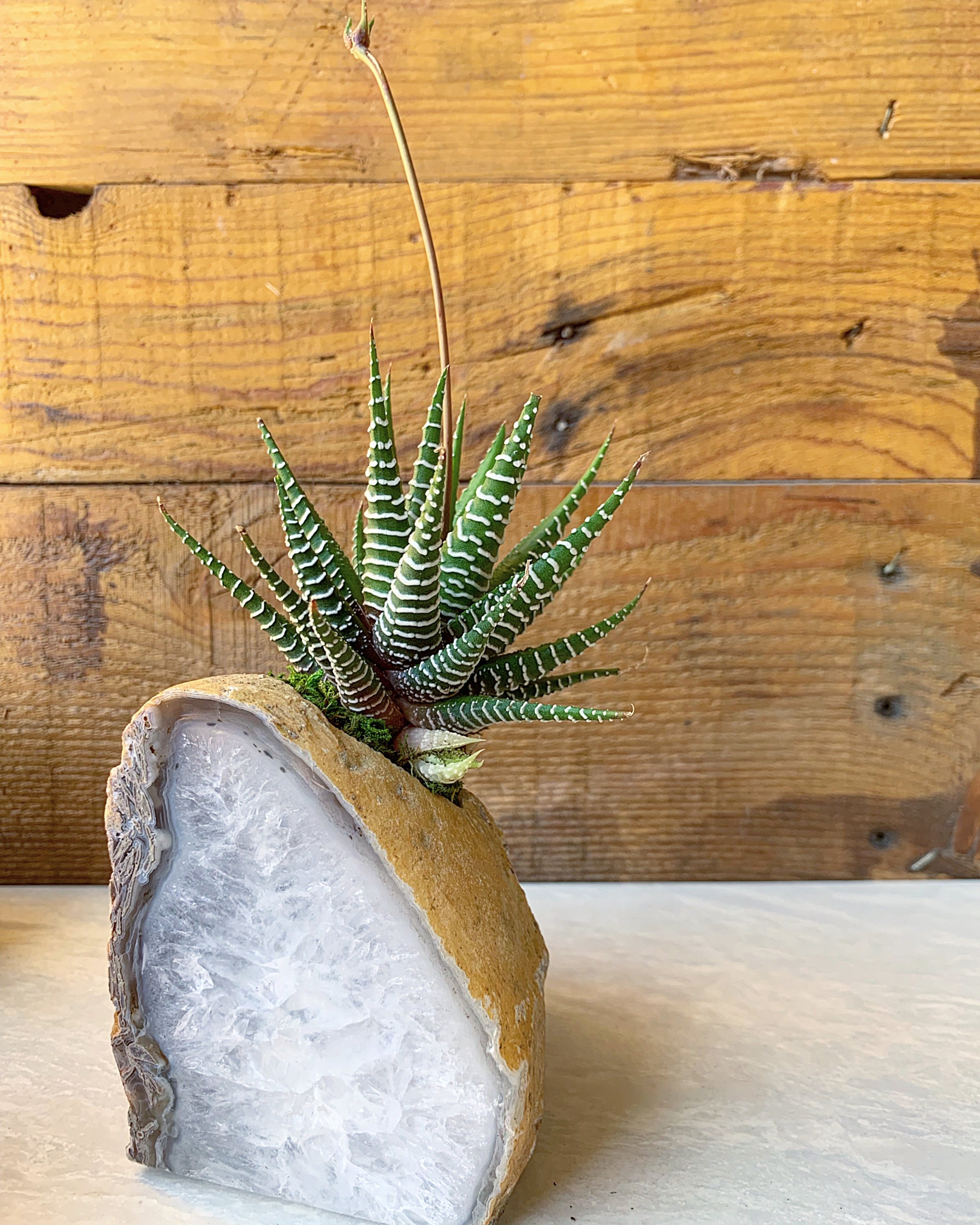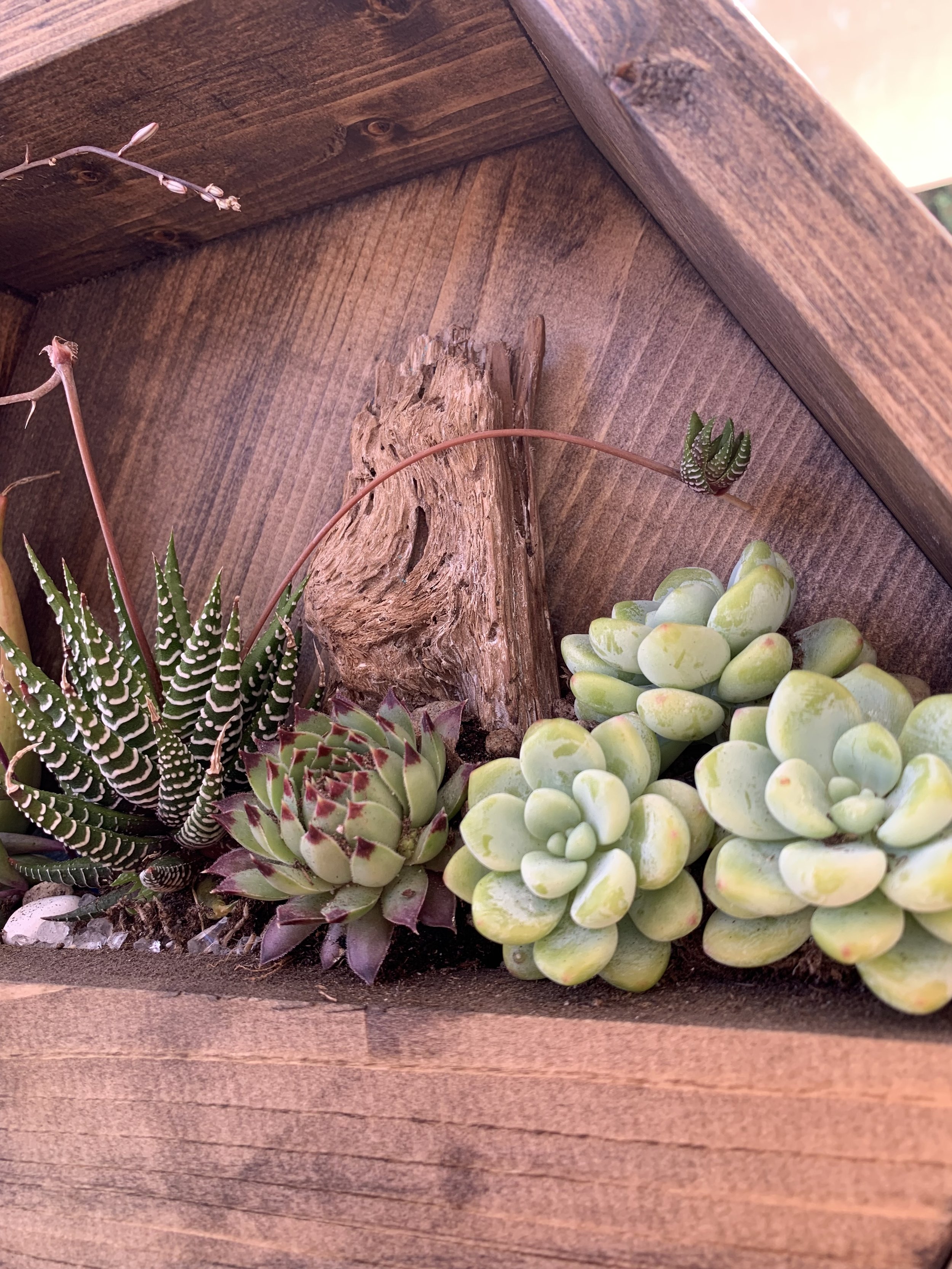Plant of the Month Archive: Haworthia Succulents
On left Haworthia cooperi hybrid. On right Haworthia attenuate hybrid
all about the haworthia genus of succulents
It’s been a particularly cool and gray last few weeks in So Cal (we like to call it May Gray and June Gloom). So, I felt it appropriate to share some of my favorite low light loving succulents with you all this month. Introducing June’s Plants of the Month - the Haworthia!
This large genus of small succulents first evolved in Southern Africa and are now a popular and hearty succulent used often in containers and gardens. They are an especially popular succulent for indoor and low light areas, since almost all of the approximately 150 species of haworthia evolved in semi-shaded to shaded conditions. Some possess rough leaves often dotted and striped with attractive veins of white and black or even red! (Common examples include Haworthia attenuate and Haworthia fasciata) Others are thick and plump, with lighter green and smooth leaves that possess translucent “windows” which is an adaptation that allows more sunlight to flood into the photosynthetic tissues inside. (Common examples like Haworthia Cooperi and Haworthia magnifica). When they bloom, they shoot out a really long stem (up to 16 inches!) with small white flowers developing at the end.
Zebra Haworthia planted into Agate Stone
caring for your haworthia:
LIGHT:
Most Haworthia species prefer shaded light conditions and do well indoors near a sunlight source. Some species can be acclimated to brighter light conditions, yet indirect sunlight is always best! Some haworthia will take on a reddish or purplish color when stressed due to bright light and dry conditions.
WATER:
Like with most succulents well-draining soil is best for all Haworthia. Most prefer a more frequent watering during the hotter spring and summer months and reduced watering schedule during winter months. Yet they are highly adaptable to varying watering conditions. Do not allow the roots to sit in soggy soil for too long, as this can lead to root rot.
PROPAGATION:
Check out that baby Haworthia pup growing at the end of what appears to be an aerial root!
The easiest and most effective way of propagating your Haworthia Succulents is through their natural way of producing little pups around the mother plant. I have read that you can also propagate these through an undamaged leaf, yet I have not had luck with that method. I did see one of my Haworthia attenuate produce the most adorable pup off what looked like a flower stalk but was probably an aerial root.
thanks for reading!
rachael
SOURCES:
THANKS FOR READING!
RACHAEL & Zoey



